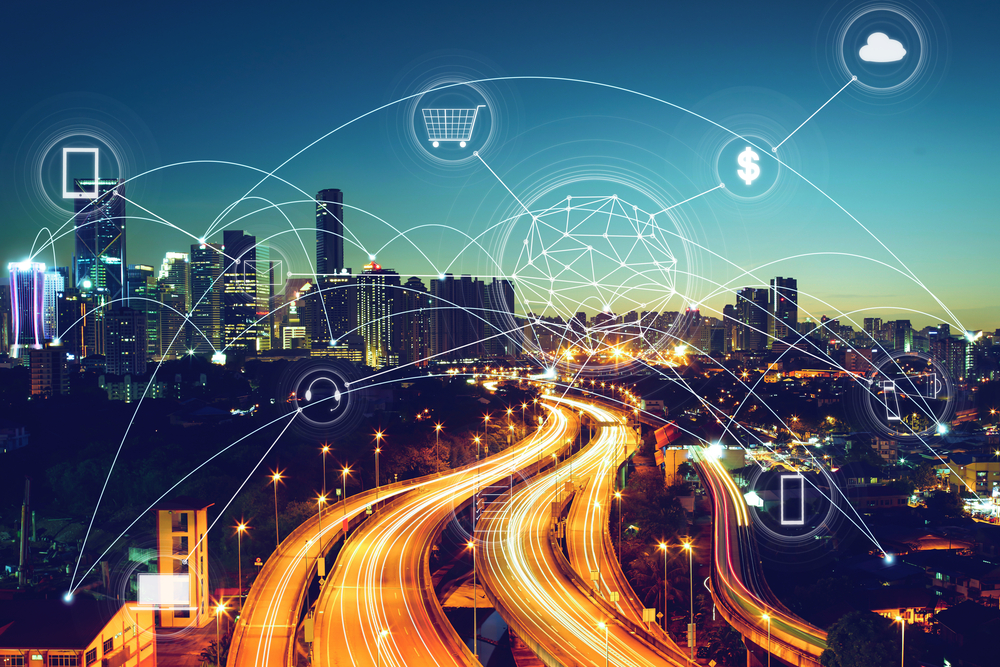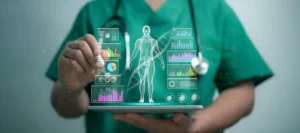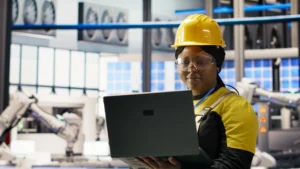Digitalization of the electrical grid will provide cities more agile solutions for the identification of problems and the need for repairs to a system. Using a digital map of a region, it will be possible to monitor and anticipate the needs of an entire grid with data captured by sensors and artificial intelligence, offering intelligent urban services and with better quality.
This post will present how data collection functions on electrical distribution girds, the potential for sharing data among different systems and some opportunities for urban services that can come from this. Enjoy your reading!
Sharing data from urban infrastructure
When applied to an electrical grid, data intelligence is essential for avoiding service interruptions, and making service safer and more reliable. This is only possible due to the use of artificial intelligence, which allows a system to identify problems and automatically reconfigure itself, allowing teams to focus on the best way to use the information.
Digitalized data from urban infrastructure can be shared with citizens, universities, startups, and government to develop new intelligent urban services and sustainable solutions.
In the current model, the grid only includes equipment for electrical such electrical distribution such as cables, transformers, circuit breakers and others.
The digitalization of the electrical grid will allow much of the equipment and information on the system to be used not only by the company responsible for the service, but also by water and gas utilities, telecommunications companies and municipal governments.
How will this be possible?
The answer is by collecting and sharing data. The new equipment will no longer be passive and will have intelligent sensors capable of capturing all kinds of information from the environment.
Thus, a post will:
- Collect data about temperature, pollution, and relative air humidity through sensors,
- Map movement on streets and sidewalks with the assistance of intelligent cameras and facial recognition tools, and those for counting people
- Identify electrical demand at each point and the consumption peaks by means of sensors, and conduct other functions
All this information will be stored on databases and can be used to generate various benefits for the community, from steering the opening of new business to accompanying the growth of vegetation that can damage electrical grids.
Moreover, the data can assist government, by analyzing movement of cars and people, resynchronizing traffic signals and improving the flow of vehicles.
Read also: Innovations that are transforming electrical distribution
When we speak of intelligent urban services based on data digitalized on the system, another fundamental technology is digital twins. To summarize, these are virtual representations of physical components on the grid fed by intelligent sensors.
Since they operate in parallel to what is happening in the real environment, digital twins incorporate a series of data in real time, increasing the predictive capacity of a system and conducting simulations that benefit the reliability of service and support decision making.
This is only possible with a data driven approach, in which the large volume of data collected in real time allows predictive and prescriptive models based on machine learning and deep learning algorithms, thus allowing the development of intelligent urban services.
Intelligent urban services: how the data can support innovative solutions
The collection and storage of data on the electrical system allows creating an ecosystem for sharing and exchanging information among different systems and a wide variety of stakeholders.
It is thus possible to integrate data from third parties and share it with other companies and institutions, helping to create new solutions and better services for the community. This can lead to an integration of local infrastructure, supporting mobility, safety, reduced waste, urban planning, and other advantages.
Technical training and remote assistance
The digitalization of data and its availability in applications of Augmented Reality and Virtual Reality also provide benefits to the routine of technicians responsible for the system. This is because these technologies allow the realization of training in virtual environments that are extremely faithful to the physical environment in which the professionals will operate; all with remote assistance and much greater safety.
Maintaining assets
The information collected will also be important to the maintenance of assets on the system. The monitoring of data sent by the equipment will allow gauging the stress to which components on a grid are submitted and foresee when there may be failures and thus, act preventively, anticipating repairs. This helps to reduce maintenance costs on the grid and increase the useful life of assets.
Circular economy
This is closely related to the model of the circular economy, in which technologies are developed according to the concept of circular design. This methodology foresees that solutions that are resignified to develop deep cycles that are based on clean energy sources, considering their impact on society and the environment.
Thus, in this context, the circular economy encourages longer useful life of components on the grid and the reuse and recycling of materials, allowing new and more sustainable business models.
Intelligent urban services
As we saw, it is possible to attain these benefits by using data and artificial intelligence to create intelligent urban services, which consider not only the economic sustainability of the solutions provided, but also social and environmental sustainability. To learn more about the issue, continue to read our articles on the CERTI blog. Contact us if you have any questions.







